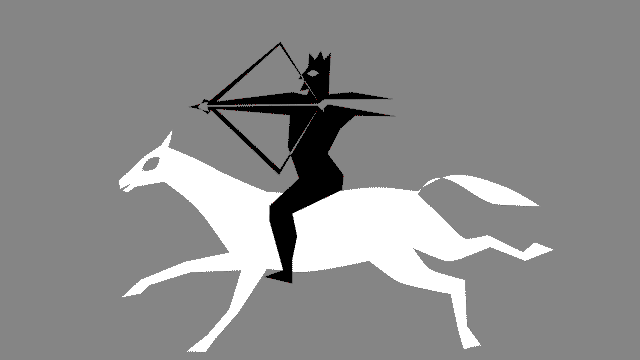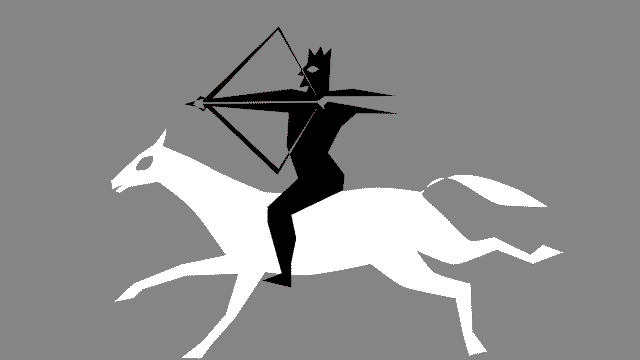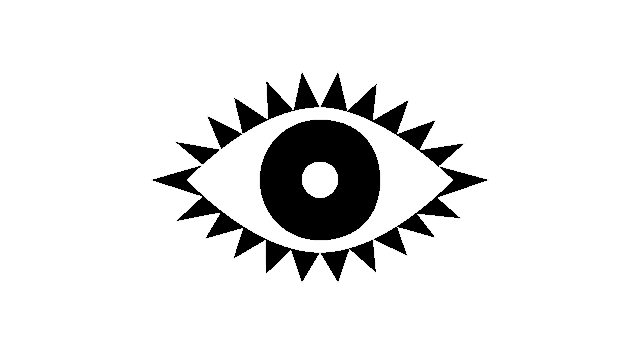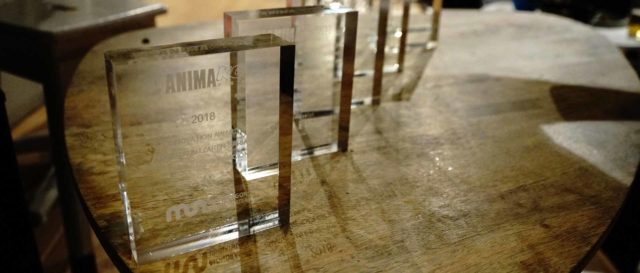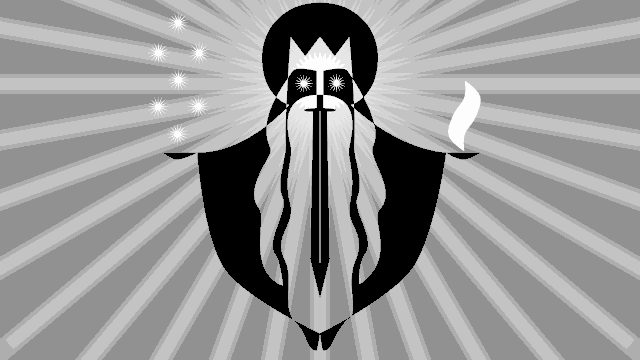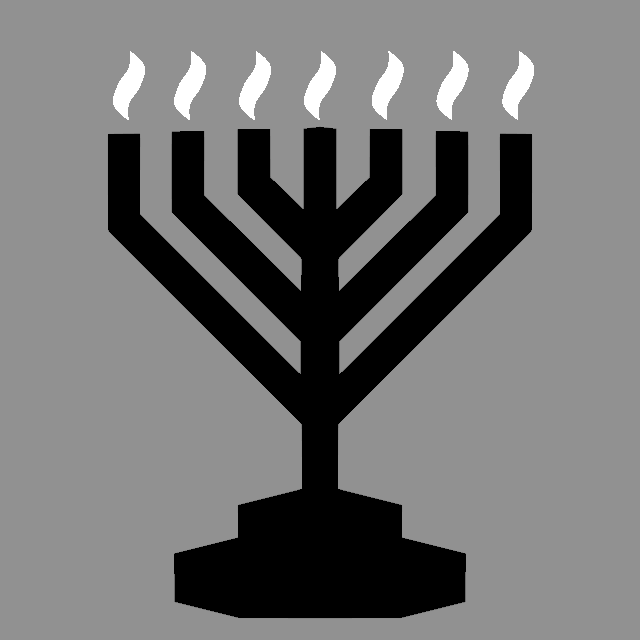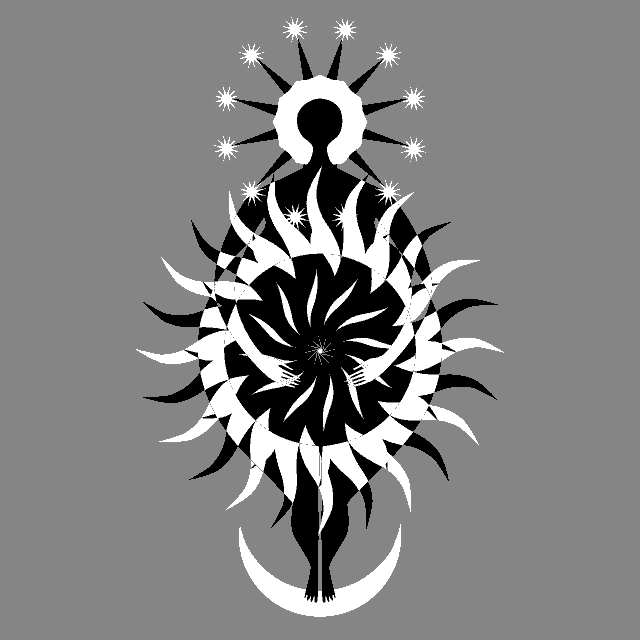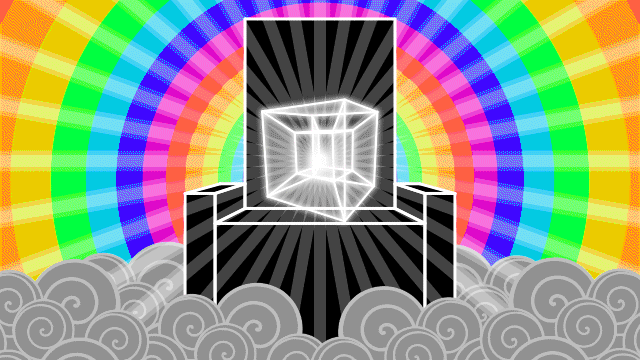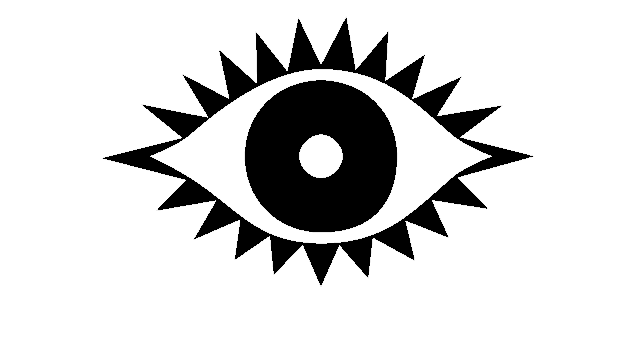2 And I saw, and behold a white horse: and he that sat on him had a bow; and a crown was given unto him: and he went forth conquering, and to conquer.
….
4 And there went out another horse that was red: and power was given to him that sat thereon to take peace from the earth, and that they should kill one another: and there was given unto him a great sword.
5 …. And I beheld, and lo a black horse; and he that sat on him had a pair of balances in his hand.
….
8 And I looked, and behold a pale horse: and his name that sat on him was Death, and Hell followed with him.
First Horseman
I’m working on the Four Horsemen of the Apocalypse. The Horse and the Man use the same 64-pointed shape as the Cathedral, Wing, Eye, Beast Head, Rose Window, etc. Because they’re the same object, I made this little 2-frame test in which they alternate – essentially a Thaumatrope. It’s just an experiment, but maybe I’ll use this effect for reals somewhere.
Eye of the Beast
Animakom Award
I was super-honored by my first lifetime achievement award from the Animakom festival in Bilbao Spain! I haven’t yet received the fancy glass plaque thingy in real life, but I did “attend” via video chat (starting around 54:30).
A few hours prior, I got interviewed by Thistle Pettersen of Women’s Liberation Radio News, and apparently had no f*cks to give as I cheerfully spouted unfiltered opinions of all kinds. That’s the great thing about getting older: you run out of fu*ks, and you get a lifetime achievement award.
Notes on the Apocalypse
Many battles, much polarization; we are splitting into sides. Online especially, there is right and wrong, good and bad, the “right side of history” and the wrong. Even saying “the right side of history” implies petty, idiotic opinions are of world-altering significance.
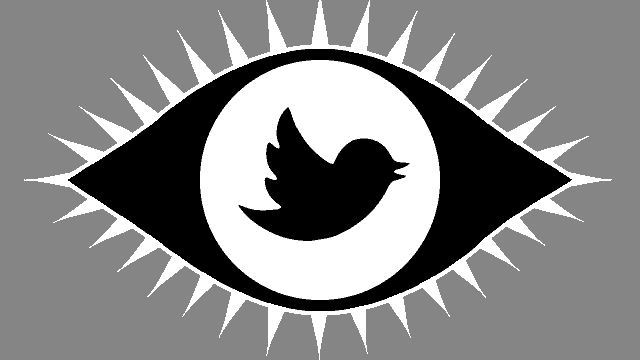
The Book of Revelation is the ultimate story of Good vs. Evil, black vs. white. It’s also the ultimate revenge story. John of Patmos was a persecuted early Christian, exiled to a penal colony, expelled from society; cancelled, as we’d say today. He was righteous and angry. He had time to imagine, in elaborate detail, the comeuppance of his oppressors. Isn’t this what we all do, if we have the time? Imagine our torturers being tortured tenfold in return, in delicious detail. It is notably un-Christian. You are supposed to forgive. You are supposed to understand. You are supposed to seek peace, to love thy enemy.
Not John! John fantasizes his enemies getting stung by locusts, rained on by fire, and cast into the pit of hell. In Revelation, neither he, nor Jesus, nor God Himself have compassion for sinners. Won’t his oppressors be sorry when they see John and his ilk rise up into heaven, while they get hurt and humiliated and tortured! Haha, turnabout is fair play! John may be motivated by that, but as far as his Jesus and God are concerned, this is simply the nature of things, the arc of justice, the “history” one is on the right or wrong side of.
Revelation’s End of the World is imagined as a war. It feels like war right now. My own little battle hill, Mount Ladyfeels, feels like a war between women and misogynists, reality and fantasy, mental health and mental illness, truth and lies. But which side is which? Each end of the pole believes it has Truth on its side. I try to stay out of fights, but I’ve gotten into this one: women don’t have penises, women are female, humans cannot change sex, gender is oppressive. To the other side, this is hate speech and I’m a nazi.
Armageddon is online. Armageddon is the Last Battle, saints against sinners. No nuance whatsoever. Have a look at twitter. Every ban of a TERF is a demon cast to hell. Look at Reddit. GenderCritical permanently eliminated: 65,000 subscribers consigned to the abyss. An angel holds the key. Righteousness is triumphing over evil! Except it’s backwards. Black is white and white is black. We’re polarized like a horseshoe magnet. Which pole is which?
So things morph in Revelation. Candlesticks are stars are churches. Seven candlesticks are also a menorah, the Jewish community from which Christianity emerges, as the Child emerges from the Woman Clothed With The Sun. Seven candlesticks, seven stars, seven churches, seven eyes of the Lamb, seven heads of the Beast. Good sevens vs Bad sevens.
Good woman, the Mother, vs Bad woman, the Whore of Babylon. The women don’t fight, they merely appear as symbols for one side or the other. There’s a third woman, the Bride of the Lamb, who is a city, the New Jerusalem. Mother, Whore, and Virgin (bride), sort of like the Triple Goddess Maiden-Mother-Crone, except no Crone. I am a crone, so I wonder what happened to Her. Is She the Whore now? In Online Armageddon, older feminists are denounced and despised. Yes, maybe that’s us.
My Animated Apocalypse will also morph, like the language of John the Divine. But in the end, even black will morph into white. Throne will morph into Beast, Lamb’s eyes into dragon’s heads, up into down, heaven into hell.
How will it end?
Why do we seek stories of “the end of the world”? The world does not end. It keeps going and going. We end though. And societies end. Someday, Civilization will end; perhaps that’s what we mean by the End of the World.
The end of the world is nothing new. The Book of Revelation has always fascinated, as people have always felt on the edge of abyss. Apocalyptic fiction continues to be written; Revelation is merely our most famous early example. This world has been ending since it was created, and it is created anew every day.
The End of the World may be an egoistic projection of us mortals, who can’t cope with the inevitability of our own deaths. If we go, our egos dictate, the World goes with us. Persecution heightens ego. When you’re a scapegoat, as John was (and as I have been), your ego is deeply wounded, along with the rest of you. It enlarges. Narcissism is a consequence of trauma. Dwelling on the End of the World is a defensive projection, to deflect the reality of death from the inflamed ego.
Civilization has never been stable, as Against the Grain by James C. Scott amply illustrates. While Civilization itself persists in various forms, individual civilizations, or societies, always fall, the individuals comprising them regrouping anew. But Civilization didn’t always exist. Humans once were bound to the rest of the natural world, without literacy or other advanced abstractions. “Everything that is created is destroyed,” say the Buddhists, so someday Civilization will go. Like Derrick Jensen, I’m rooting for this Fall, because Civilization is killing the planet.
John’s Apocalypse, though, is more the opposite: the triumph of Civilization, and the final Fall of Nature. The New Jerusalem is a city, not a forest. It is fully paved. John rapturously describes the purified metals and minerals comprising it. Nature is completely tamed; there is but one Tree, around one river that emanates from the Throne. It’s all right angles, planes and walls.
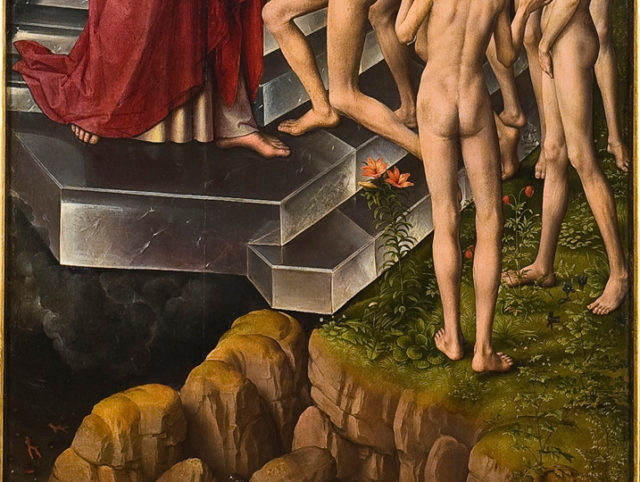
In my personal theology, a just End of the World would be a return to Nature: humans disappearing into a platonic abstract New Jerusalem, and the Earth, finally rid of us, recovering at last. But the world does not end. I will die, but the world will continue. The only end I will live to see is my own. Until then, my ego needs something to do, and dwelling on the Book of Revelation is it.

